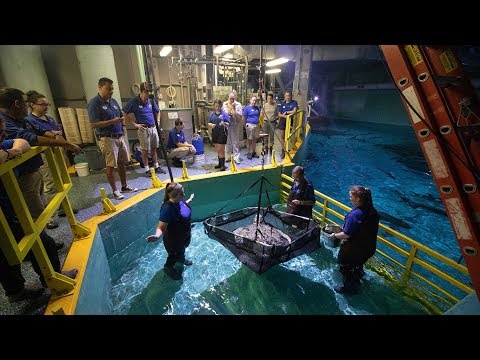Sea turtles display an incredible range of sizes, from tiny new hatchlings to giant adults that have been building bulk for decades. But what is the maximum weight these marine reptiles can reach?
Many factors impact a sea turtle’s heft, including age, species, diet, habitat, and health status. While the vast majority of adults would clock in under 500 pounds, a few exceptionally large leatherbacks have been recorded weighing over 2,000!
After extensive research, scientists estimate 160 kg (352 pounds) to be around the upper limit of average adult sea turtle weight.
This article dives into the variables that affect sea turtle weights, how the largest species compare, and the tracking methods researchers use to study these creatures.
Join us as we explore what impacts the consequences of sea turtles, from tiny youngsters to the heftiest giants of the oceans.

how much can a sea turtle weigh?
While hatchlings often weigh less than an ounce, sea turtles can reach tremendous sizes over their long lifespans. After decades of growth, the average adult sea turtle generally levels out around 160 kg (352 pounds). However, the largest leviathan leatherbacks have tipped the scales at over 900 kilograms (2,000 pounds)!
Sea Turtle Sizes
Overview of species:
There are 7 species of sea turtle found across the world’s oceans. The largest is the leatherback, which lacks the hard shell and can reach over 6 feet long.
Loggerheads are also large, growing up to 3 feet long and weighing up to 500 pounds. Green sea turtles are medium-sized, with hawksbill and olive ridley species being a bit smaller on average. Kemp’s ridleys and flatbacks tend to be the smallest species.
Weight ranges:
Sea turtles start tiny – most hatch out of their eggs at just an ounce or two in weight! As juveniles, they may gain just a few pounds a year.
By adulthood, average weights per species are: leatherbacks 330-550 lbs, loggerheads 250-500 lbs, greens 300-350 lbs, hawksbills 100-150 lbs, olive ridleys 100 lbs, Kemp’s ridleys 75-100 lbs. These are for moderately sized adults – exceptionally large individuals can weigh far more.
Exceptional cases:
The absolute largest sea turtles tend to be male leatherbacks living in the Atlantic that feed on jellyfish. These behemoths can reach over 9 feet long and weigh in excess of 1,000 pounds!
The heaviest leatherback on record was a colossal male found stranded on the Welsh coast that weighed an astonishing 2,020 pounds – over a ton!
Loggerheads have also been found exceeding 500+ pounds on rare occasions. These heavyweight giants demonstrate the incredible size sea turtles can attain.
Sea Turtle Weight Influencing Factors:
Age:
Sea turtles grow continuously throughout their lives. The weight starts to be extremely small as hatchlings only weigh 1-2 ounces and emerge from eggs. Weight gain is slow for the next 2-4 years, living as oceanic juveniles.
Once coastal foraging grounds, juveniles may gain around 10 pounds annually. Weight gain continues slowing upon reaching adulthood, but leatherbacks especially can continue building bulk for decades.
Species Differences:
| Species | Average Adult Weight Range |
|---|---|
| Leatherback | 330 lbs – 550 lbs |
| Loggerhead | 250 lbs- 500 lbs |
| Green | 300 lbs – 350 lbs |
| Hawksbill | 100 lbs – 150 lbs |
| Olive ridley | Around 100 lbs |
| Flatback | 100 lbs – 230 lbs |
| Kemp’s ridley | 75 lbs – 100 lbs |
Habitat & Diet:
Food availability shapes sea turtles’ growth trajectories. Turtles foraging in highly productive areas rich in jellyfish, seagrass, etc, often grow more extensively than those facing scarcity.
Regional habitat differences thus lead to variable adult weights. Seasonal dips in food resources can also temporarily shrink turtles.
Health & Fitness:
Disease, injury, pollution exposure, and more can depress sea turtles’ weight as energy goes toward recovery rather than growth.
Debilitated turtles will weigh less than robust, fit individuals of an equivalent age. Parasitic loads also tax body weight.
Seasonal Fluctuations:
Many sea turtles migrate long distances between feeding and nesting areas. This can shift weights substantially throughout the year as turtles burn fat stores while traveling and nesting. Some species may pack on pounds quickly again upon returning to plentiful feeding grounds.
Conclusion
Sea turtles can reach tremendously varying weights, from under an ounce as new hatchlings to giants exceeding 2,000 pounds. Most adults average between 100-500 pounds, depending on species, but many factors impact individual growth trajectories.
Understanding what allows some turtles to attain exceptional sizes while others fail to thrive is key for conservation efforts. Monitoring population weights and growth rates helps assess habitat health and resource availability.
Tracking weight also aids rescue rehab centers in determining reintroduction readiness. While substantial progress has been made in studying sea turtle development, mysteries remain regarding maximum weight limits across life stages.
Researchers also need to disentangle precise impacts from habitat degradation, pollution exposure, climate change, and more on the weights of future generations of sea turtles.
The longevity of these reptiles provides hope, but continued expansion of knowledge and protection of fragile habitats is essential to give sea turtles the opportunity to achieve their full growth potential across our oceans.

